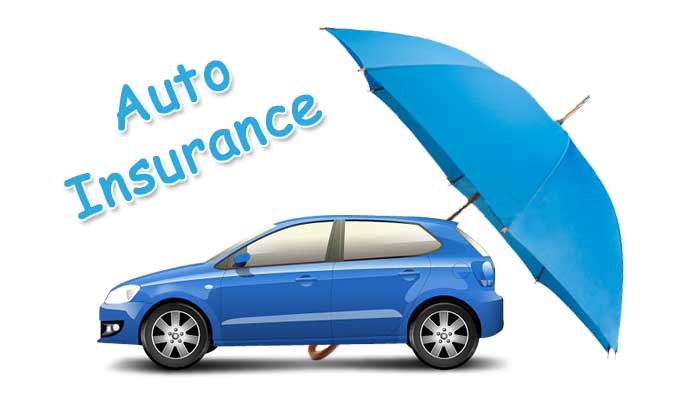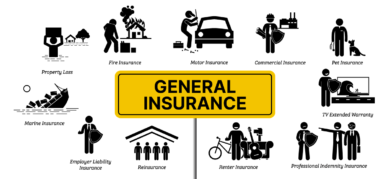Types of Auto Insurance Coverage
Auto insurance is more than just a legal requirement in many places; it’s a crucial safeguard that offers financial protection in case of accidents, theft, or damage to vehicles. With the multitude of coverage options available, selecting the right type of insurance can be a daunting task for many drivers. Each type of coverage offers different protections, and understanding these can help individuals make more informed decisions that fit their needs and circumstances.

1. Liability Coverage
Liability insurance is the most basic and often legally required type of auto insurance in many countries. It covers the costs associated with bodily injury and property damage that you cause to others in an accident where you are at fault. This means if you hit another car and the driver or passengers suffer injuries, liability coverage will pay for their medical bills, as well as the cost to repair any damage to their vehicle or property.
Liability coverage is split into two categories:
- Bodily Injury Liability (BIL): Covers medical expenses, lost wages, and other costs associated with injuries sustained by others in the accident.
- Property Damage Liability (PDL): Covers the cost of repairs to other people’s vehicles or property that was damaged during the accident.
The importance of liability coverage cannot be understated. It not only protects the other party in an accident but also shields the at-fault driver from financial ruin by covering the significant expenses that can arise from medical treatments and repairs.
2. Collision Coverage
Collision coverage helps pay for repairs or the replacement of your own vehicle if it’s damaged in an accident, regardless of who is at fault. Whether you collide with another vehicle or an object, like a tree or guardrail, this coverage will step in to pay for repairs or replacement, up to the actual cash value of your car. It’s especially important for newer or more expensive vehicles, as repair costs can quickly escalate.
One key point to understand is that collision coverage typically comes with a deductible—a predetermined amount that the insured must pay out of pocket before the insurance kicks in. For instance, if your deductible is $500 and the repair costs total $2,000, you would pay the first $500, and the insurance company would cover the remaining $1,500.
3. Comprehensive Coverage
Comprehensive insurance covers damage to your vehicle that is not caused by a collision. This can include damage from theft, vandalism, fire, natural disasters, falling objects, or even hitting an animal. Just like collision coverage, comprehensive also has a deductible that you must pay before the insurance company covers the rest.
Comprehensive insurance is essential for those who live in areas prone to natural disasters like floods or wildfires or areas with higher rates of theft and vandalism. It provides peace of mind knowing that you’re protected from a wide range of potential risks.
4. Uninsured/Underinsured Motorist Coverage (UM/UIM)
Uninsured and underinsured motorist coverage protects you if you’re involved in an accident caused by a driver who either doesn’t have insurance or doesn’t have enough coverage to pay for the damages they caused. Despite laws requiring drivers to carry insurance, many people still drive without it, or they may carry only the minimum required coverage, which might not be enough to cover serious injuries or extensive damage.
- Uninsured Motorist Coverage (UM): Pays for your medical bills and lost wages if the at-fault driver doesn’t have any insurance.
- Underinsured Motorist Coverage (UIM): Kicks in when the at-fault driver’s insurance coverage is insufficient to cover all your expenses.
This type of coverage is critical because it ensures you’re not left covering costs that should be the responsibility of another driver, even if they are not adequately insured.
5. Personal Injury Protection (PIP)
Personal Injury Protection, commonly referred to as PIP or “no-fault insurance,” covers medical expenses, lost wages, and sometimes even funeral expenses for you and your passengers, regardless of who is at fault in an accident. Some PIP policies may also cover rehabilitation and other essential services like child care during recovery from an accident.
PIP is mandatory in several states, especially in the U.S., and provides a layer of protection that goes beyond just medical payments. It can be particularly useful in accidents where the fault is unclear, or when immediate financial assistance is required for medical treatment and other expenses.
6. Medical Payments Coverage (MedPay)
Medical Payments Coverage, or MedPay, is similar to PIP but generally offers less extensive coverage. It covers medical expenses for you and your passengers after an accident, regardless of who is at fault. Unlike PIP, MedPay doesn’t cover things like lost wages or non-medical expenses, but it can be a useful and affordable addition to your policy if you want extra protection for medical costs that aren’t covered by health insurance.
7. Gap Insurance
Gap insurance is a specialized type of coverage designed to protect drivers who owe more on their vehicle than its current market value. If your car is totaled in an accident, comprehensive or collision insurance will only pay the actual cash value (ACV) of the car at the time of the accident, which may be less than what you owe on your auto loan. Gap insurance covers the difference, or “gap,” between the amount you owe and the ACV of the car.
This is particularly valuable for those who have financed a new vehicle with little or no down payment, as cars depreciate quickly, and the outstanding loan balance may exceed the car’s value for several years.
8. Roadside Assistance Coverage
Many insurance companies offer roadside assistance coverage as an optional add-on. This coverage helps with services like towing, jump-starting a dead battery, changing a flat tire, delivering fuel, or unlocking your car if you’ve been locked out. While not essential, it provides convenience and peace of mind, especially for long-distance drivers or those who frequently travel in areas where help may not be readily available.
Conclusion
Choosing the right type of auto insurance coverage is crucial for ensuring adequate protection in the event of an accident, theft, or other unforeseen circumstances. Each type of coverage serves a specific purpose and can be customized to meet individual needs and circumstances. Understanding the differences between liability, collision, comprehensive, and other types of coverage can help drivers make more informed decisions, ensuring they are financially protected while on the road.
The key to maximizing your auto insurance is understanding not just the legal requirements, but also your own financial situation and driving habits. With this knowledge, drivers can build a policy that provides the right balance of protection and affordability, allowing them to navigate the roads with confidence.




